Starting a new podcast takes a lot of work. After you picked a theme, chose a name, designed a logo, bought gear, found hosting, set up distribution accounts, and created a calendar of show ideas, you might think you’re all set, but have you built a home for your show online yet? These podcast website examples will give you ideas on making a site that will help you stand out from the competition.
Read on to learn which 12 features are must-haves on all of the best websites for podcasts.
What you need to know when building a website for your podcast
Did you know … in 2021, researchers estimate that monthly U.S. podcast listeners will grow by 10% before the end of the year?
New podcast listeners often start with what’s the most popular and stalwarts like This American Life, Serial, or RadioLab.
These shows are admired and stand the test of time because of ace production values and great storytelling. But, their attention to detail doesn’t stop just with what they put on tape. The best of the best also produce great podcast websites to support their shows.
When you are new to the podcasting medium, you don’t have word-of-mouth marketing working for you yet like more successful shows. One often-overlooked way to jumpstart reputation-building and establish legitimacy is to support your new show with a well-designed website with compelling content.
All of the most outstanding podcast website examples are feature many of the same qualities found on any good site, e.g.,:
- They are fast
- They track usage with stats
- They include simple navigation options
- They are mobile-friendly
- They are secure and protect users
- They are backed up regularly
- They have a good search tool
Beyond those essentials, here are other specific tips you might want to keep in mind when creating designs for your podcast website. These features will enhance your show’s site and guide you in developing the most meaningful supporting content so that you can attract new listeners and make your devoted audience even more engaged.
What every excellent podcast website needs
Description of your show
The funny thing about show names and taglines is that they don’t always actually really tell users what your show is about—and that’s okay … as long as you have a good description of your show (which is easy to find) as part of your podcast website. It might seem obvious to you what your show is about, but it doesn’t hurt to include a succinct description for prospective listeners—think two-sentence elevator pitch—as part of your podcast website’s about section.
Rough Draft
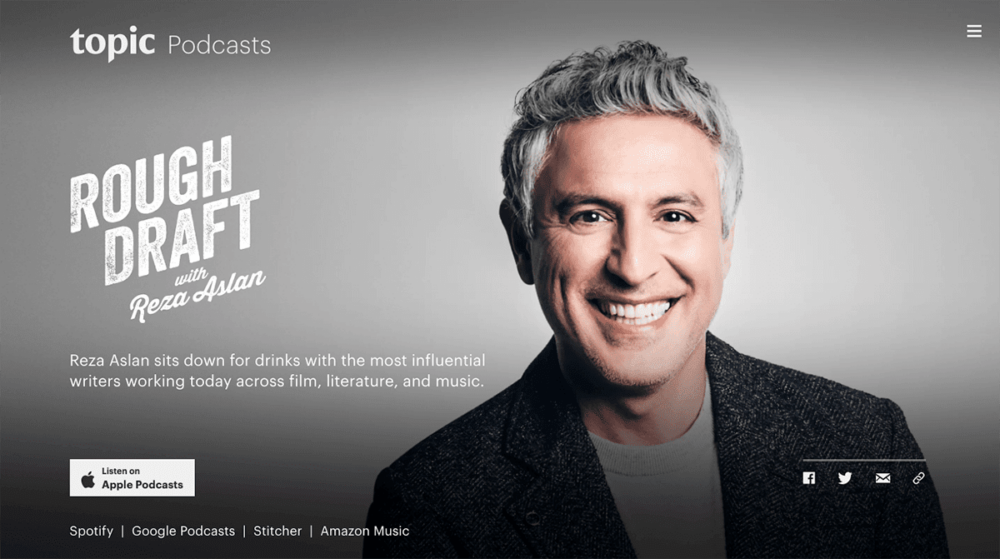
Call Your Girlfriend

Host information (and guest bios)
Listening to a podcast can be an intimate experience. As part of your podcast website, introduce the people behind the voices by providing bona fides and fun facts about people who are part of your show.
The Trials of Frank Carson

“Having a podcast is a fabulous excuse to interview fascinating people. … It creates an asset, one that people can engage with for years to come.”
FAQs
Creating an FAQs page on your podcast website to answer frequently asked questions is a great way to improve the overall user experience. They can also tell search engines more about your area of expertise if you optimize its content using a fitting keyword target.
You Must Remember This
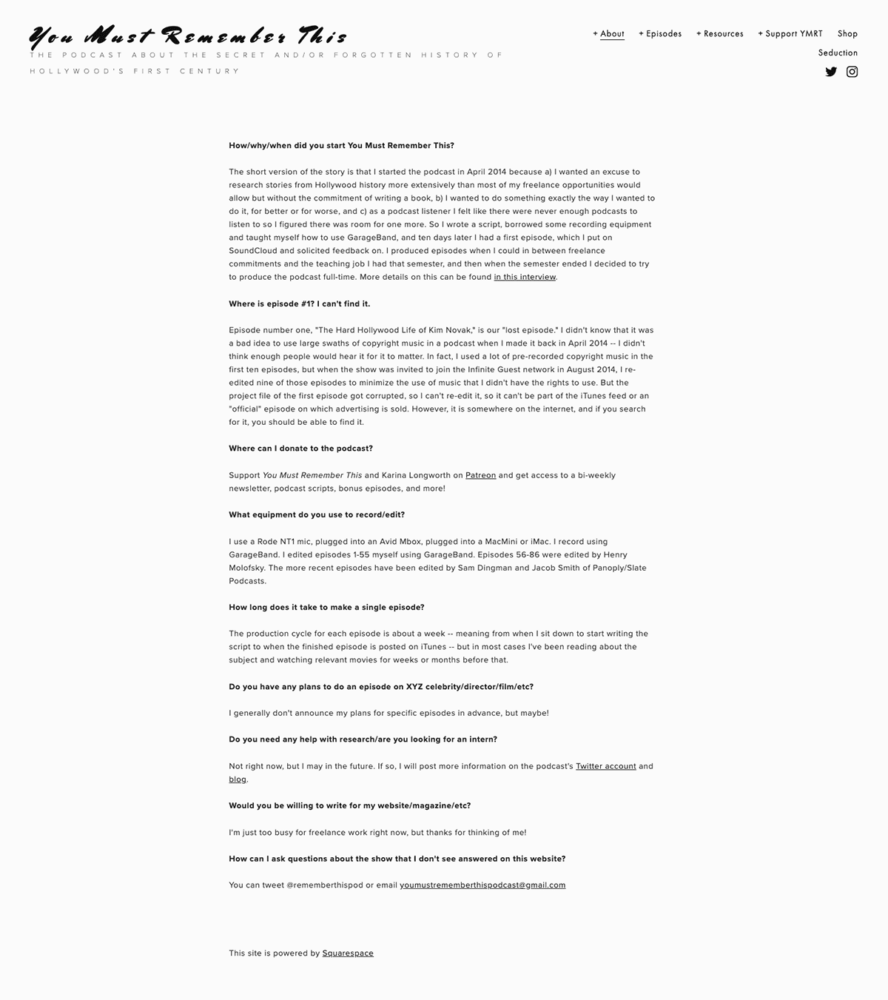
Transcripts
Transcripts are SEO gold because they can extend your reach. Including them as part of your podcast website helps search engines properly index each episode of your show, which may help elevate your show’s potential visibility on search engine results pages.
OrthoInform
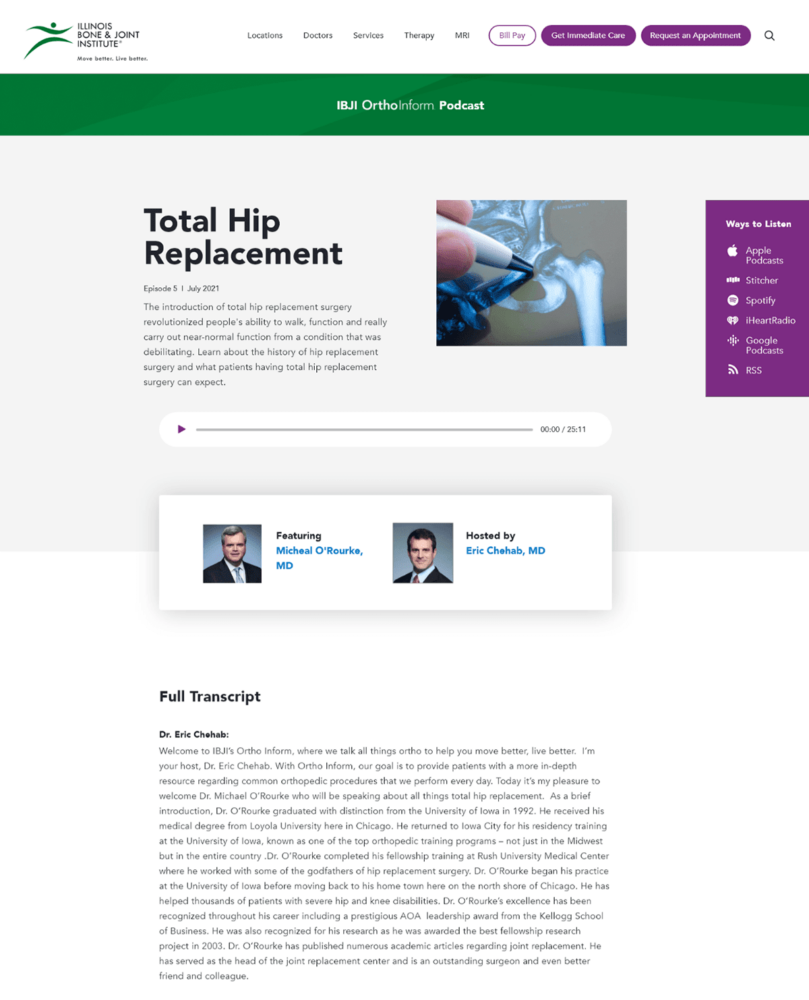
Newsletter sign-up
Email opt-in lists or newsletters are an easy yet powerful way to keep in touch with casual listeners (or convince them to subscribe to your podcast through their favorite app). Add a space on your website to encourage users to sign up for your email alerts about your podcast programming and announcements about other marketing communications. You might even try to entice people to sign up with a teaser subheading, like “Don’t miss an episode.”
Radiolab
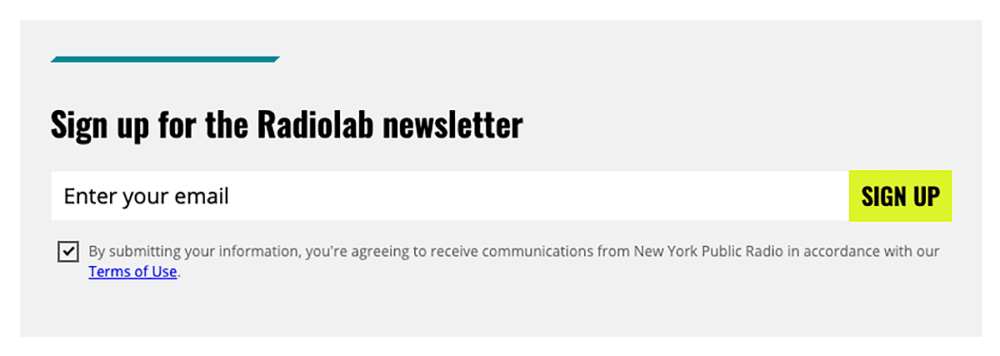
Reveal
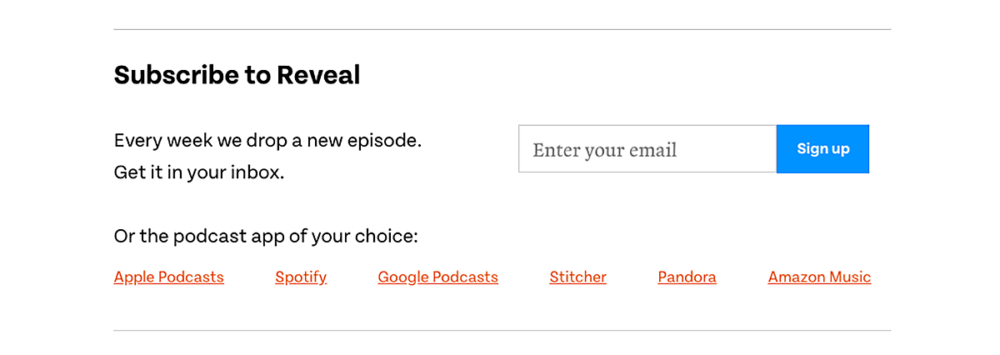
Embeddable players
Give your listeners multiple ways to stream episodes of your show. Hosting services like Libsyn, Simplecast, SoundCloud, and Spreaker include embeddable players with their service.
Additionally, almost all distributors (e.g., Apple Podcasts, Google Podcasts, Spotify, Pandora, Amazon Music, and Stitcher) provide embeddable players.
Post Reports

Big Brains
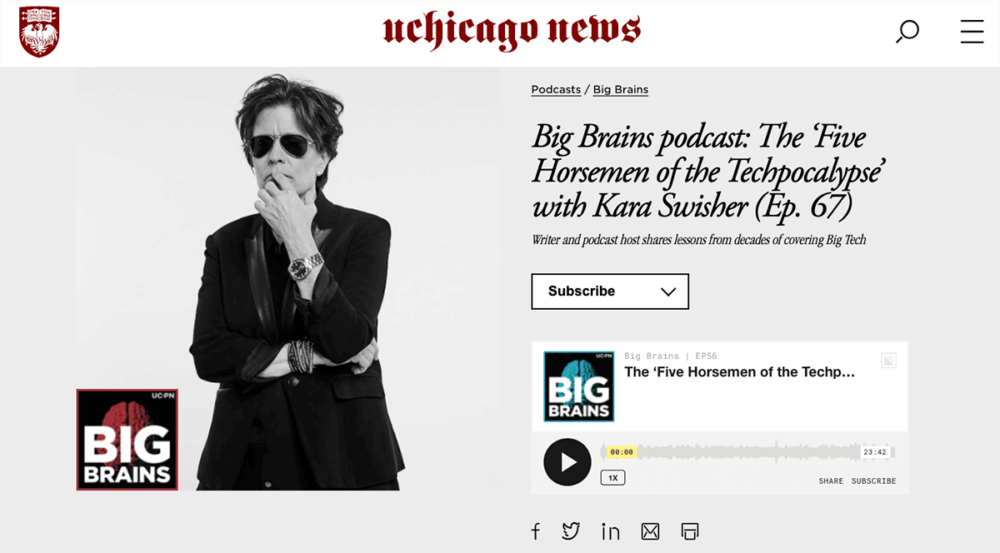
Contact information
How can listeners reach out? What about potential advertisers? Remember to include contact information—or at least a contact form—so that people have a way to reach you.
Zen Parenting Radio
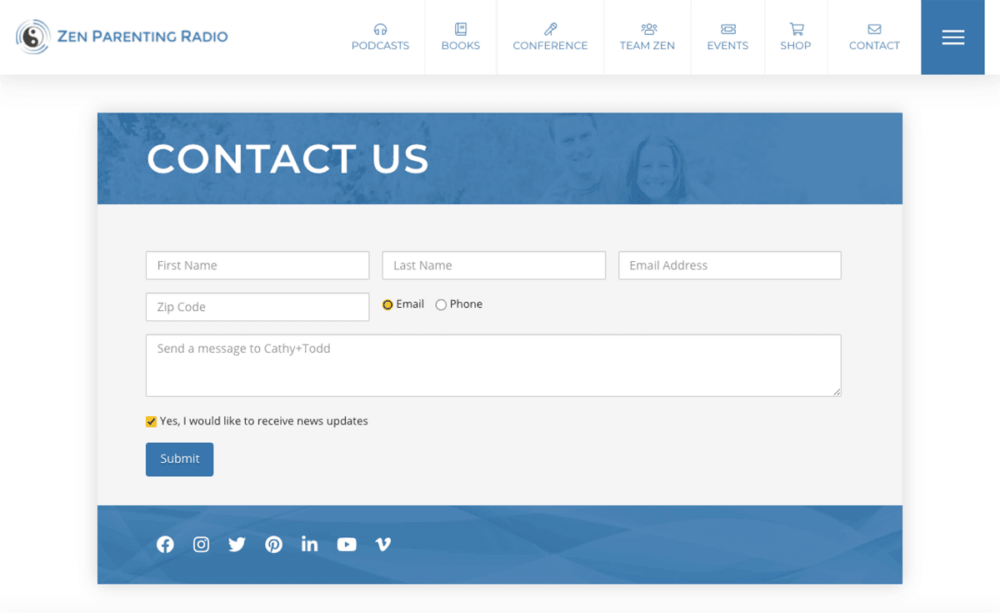
Social sharing tools
Free advertising is a good thing. Make it easy for your listeners to share their favorite episodes with their network in one click with social sharing buttons embedded on the episode write-ups on your podcast website.
Crime Show
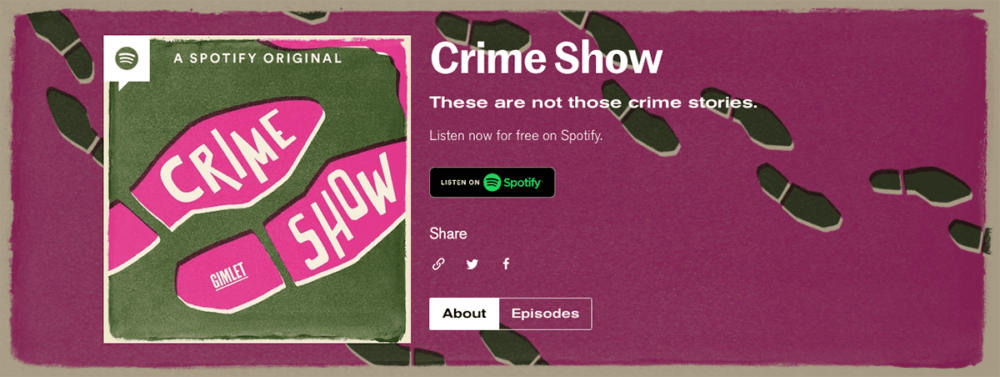
Song Exploder
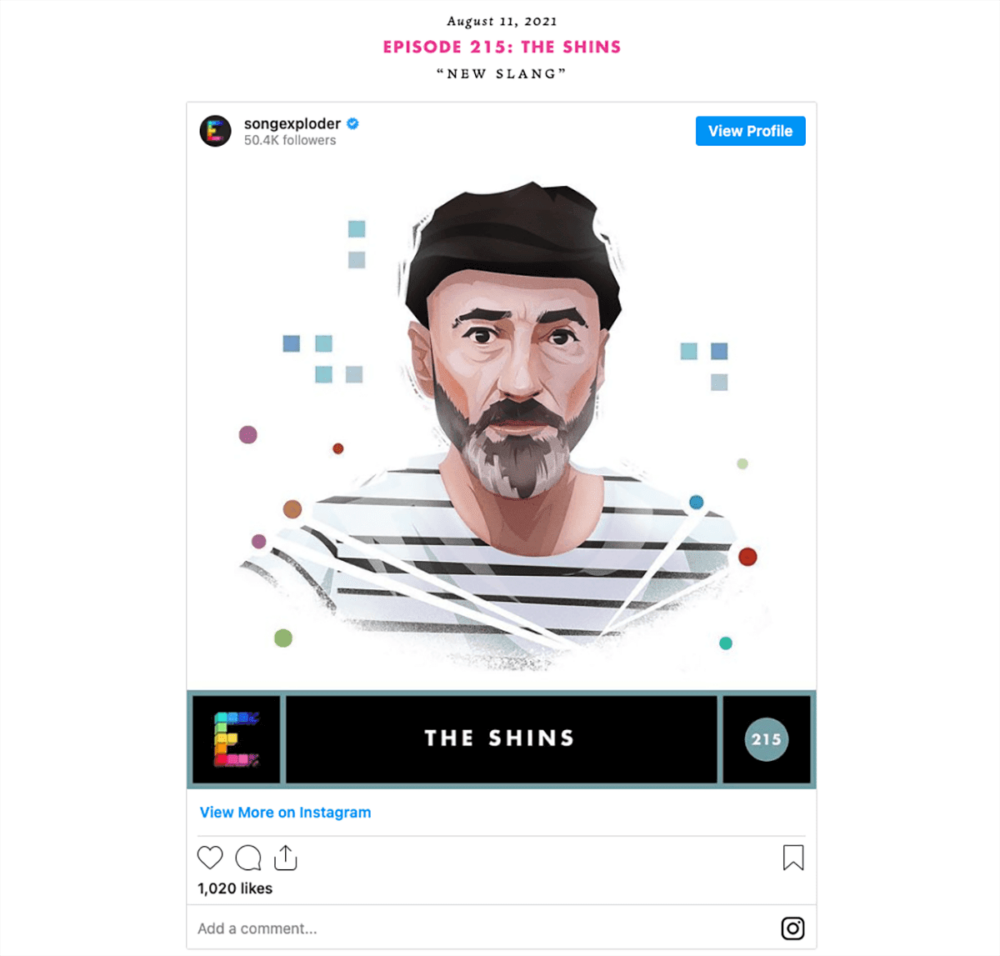
RSS
Make it easy for your listeners. By providing a link to the RSS feed for your show as part of your website, you give users the option of subscribing so they can skip searching for new content and hear the latest episodes as soon as they are released.
Through the Cracks

Episode labeling
Though your description of each installation will tell listeners what your latest show is about, your title should clearly give users an idea, too, when they browse episode listings on your podcast website. For consistency, don’t forget to up your professionalism by establishing a repeatable format for your titles, too.
Office Ladies

Branding
You have a nice logo and avatar, but have you established brand identity styles beyond those starter assets? Complete the branding process. Don’t forget to think through little things, like how supporting art for each episode should look.
Ezra Klein Show

You Got This
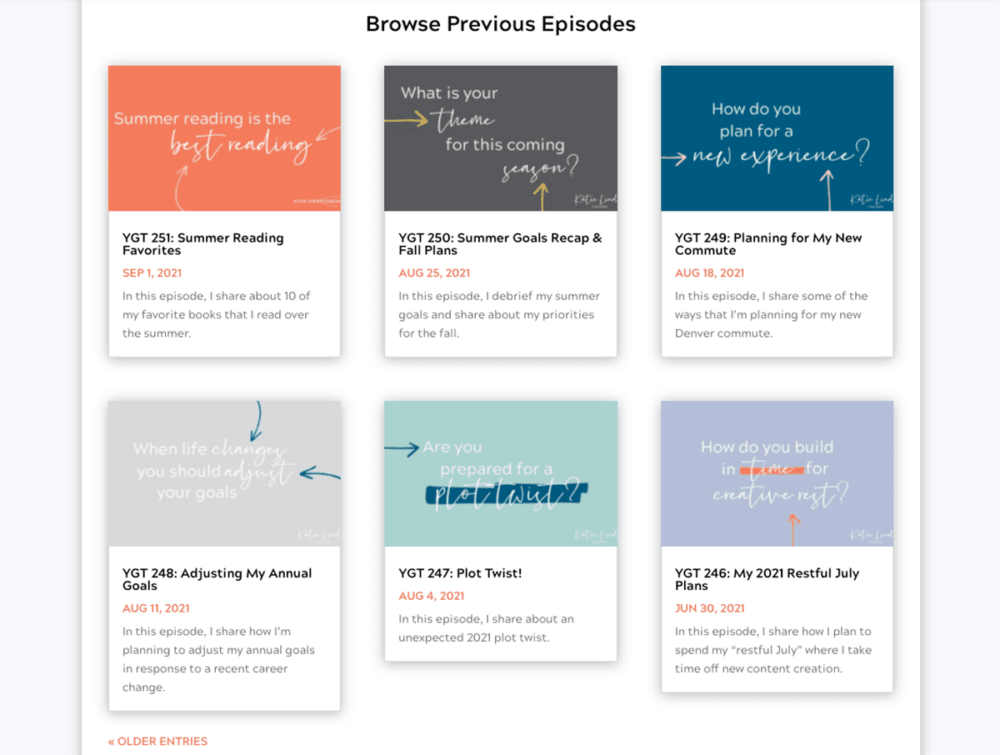
Languages
Does your podcast cover topics of interest to audiences who speak different languages? Consider publishing episodes—including descriptions and show notes—in all appropriate languages.
Anything for Selena
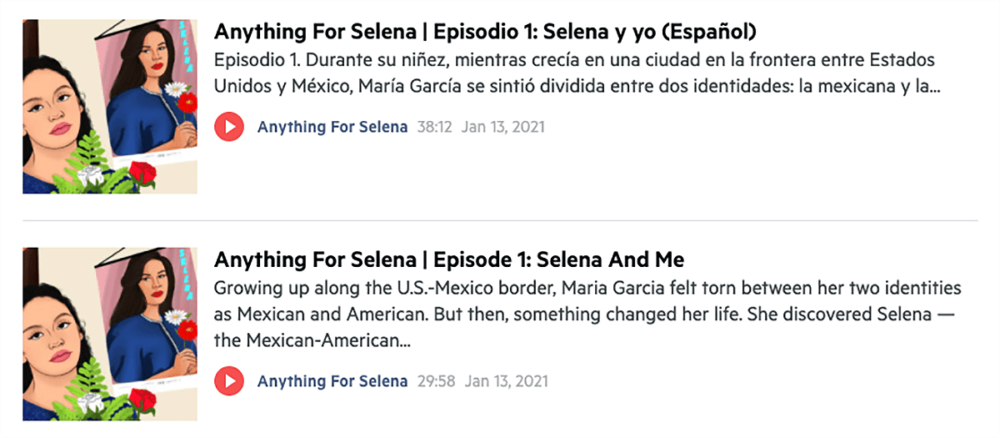
Why create a podcast website
There are a lot of ways you can spend money to promote your show. You can run Google paid ads, organize social media contests, try influencer marketing, and more. Before you go too far with those digital marketing efforts, don’t forget that every podcast needs a strong foundation in the form of a well-done site.
Use the 12 tips in this blog post and take inspiration from these 17 podcast website examples to boost show awareness, elevate engagement, and improve the listener user experience. Make sure its design and development are a part of your next podcast planning session.
Need a hand creating a podcast website? Let’s talk.

